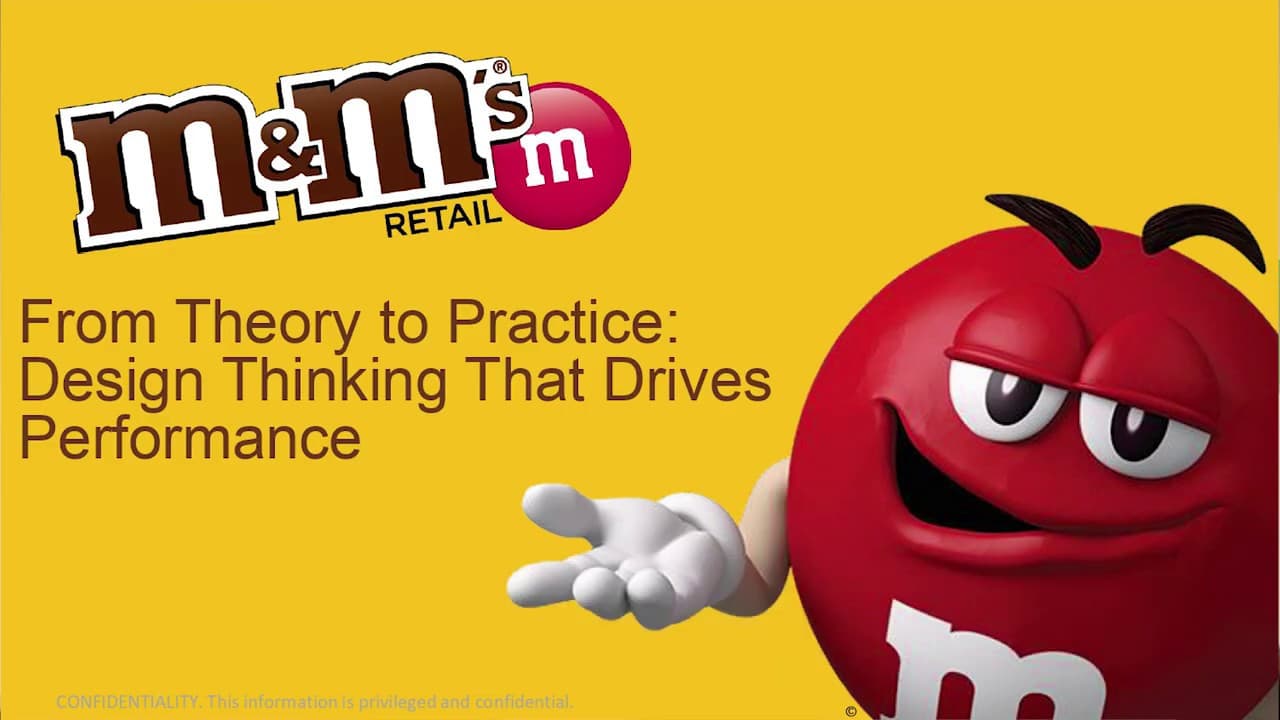First of all, thank you so much for having me here. This is a sweet spot, and I’ll tell you why—it’s the perfect moment to talk to you first thing in the morning about M&Ms.
How many of you know M&Ms or have had M&Ms before? Fantastic! Now, how many of you know that you can personalize M&Ms? Wow! And finally, how many of you have actually ordered or received personalized M&Ms? Much fewer hands, right? That’s exactly why I’m here—because even though M&Ms is one of the biggest brands in candy, we still face the challenge of reaching customers who don’t know about our personalization options.
About M&Ms Retail
My name is Monica Nelson, and I’m the Global Experience Director (CXL) for M&Ms Retail, a division of Mars Incorporated. Mars is a global company operating in over 80 countries with 420 different sites. We own many beloved brands you all know—Snickers, Twix, pet food brands, and food brands like Uncle Ben’s rice.
M&Ms Retail offers fans a customized experience through My M&Ms, where you can order personalized M&Ms with your face, name, message, or company logo. We also have five flagship stores around the world, including one just two blocks away in New York (there are coupons on your tables if you’d like to visit!). Other locations include Orlando, Shanghai, Las Vegas, and London. Additionally, we have a B2B licensing business, which is the focus of today’s discussion.
The Challenge
Despite our strong brand, our B2B business was not performing as well as expected. Imagine attending a conference like this and ordering custom M&Ms with your company logo on them. Sounds great, right? But we weren’t seeing the level of engagement we expected in the B2B space. While M&Ms is a household name, our customization service was largely unknown and underutilized.
So, we asked ourselves: Why are we not excelling in B2B? We were thriving in every other area but struggling to make an impact in this sector.
Using Design Thinking
To understand the problem, we turned to design thinking. We conducted a workshop to get closer to our customers and truly understand how they perceived us. We engaged with three different types of B2B customers:
- A large enterprise company
- A technical association
- A company with a strong tradeshow presence
In addition to these interviews, we sent surveys to 300 B2B customers, asking them about their experience ordering from us. The results were eye-opening.
The Pain Points
Here’s what we discovered:
- 1-800 Number for Ordering: Customers had to call a number, speak to a representative, describe their order, email their logo, and wait three days for a response. This was far from a modern digital experience.
- Slow Response Times: The process took days, sometimes weeks, to complete.
- Manual Legal Forms: An eight-page legal document had to be signed and faxed back before an order could be processed.
- Equal Treatment for Small and Large Orders: A $500 order and a $150,000 order received the same processing priority.
- Outdated Catalog System: The only way to browse our offerings was by downloading a PDF catalog.
It was clear that our outdated systems were making it difficult for customers to engage with us.
The Transformation Journey
With all this feedback in hand, we assembled a cross-functional team from across the company. For two days, we mapped out the entire customer journey—how they discover us, engage with us, place orders, and interact post-purchase.
One key realization was that many customers never returned, not because they didn’t love the product, but because the process was so frustrating that they didn’t want to deal with it again.
Key Questions We Asked:
- How might we make this journey seamless?
- How might we engage more effectively with customers?
- How might we digitize this experience?
Prioritizing Solutions
Our team brainstormed 45 different ideas to improve the experience. We couldn’t implement all of them, so we prioritized based on impact, feasibility, and resource availability. We narrowed it down to nine key initiatives that we believed we could implement in just five weeks.
Now, let me be clear—nothing at Mars happens in five weeks. So, this was a radical shift in thinking.
How We Made It Happen:
- Initially, we met once a week, but progress was slow.
- We shifted to three stand-up meetings per week (Monday status meeting, Wednesday stand-up, and Friday stand-up).
- Having the right decision-makers in the room (e-commerce, digital, customer care, CMI) made quick decision-making possible.
The Key Initiatives
Here’s what we implemented:
- Digital Portfolio: We moved our product catalog online so customers could easily browse and select products.
- Corporate B2B Distributor Presence: We discovered that while Mars was a #1 brand, our B2B customized M&Ms ranked #39 in search results. We fixed this immediately.
- Personalized Configurator: We adapted our existing customer-facing configurator for B2B use.
- Eliminated Manual Legal Forms: We worked with legal to replace the eight-page document with a simple online checkbox.
- Rethinking Innovation: We tested an IoT M&Ms dispenser idea and learned through customer feedback that it would be more useful in offices rather than homes, saving us from misguided investment.
The Results
In just five weeks, we achieved:
- 2,080 orders
- Conversion rate increase from 2% to 9% (4x improvement)
- Average order value increased by 25%
The total financial impact was in the millions of dollars (exact figures confidential), but these results were game-changing for our B2B business.
Lessons Learned
1. Always Listen to the Customer
Truly understand their journey, validate assumptions, and ensure solutions are customer-driven.
2. Get the Right People in the Room
Cross-functional collaboration and quick decision-making were key to our success.
3. Keep an Open Mind
Be willing to pivot based on customer insights rather than sticking to preconceived ideas.
Final Thoughts
Our transformation journey is just beginning, but these changes have already made a significant impact. By focusing on customer experience, eliminating roadblocks, and embracing agility, we’ve positioned ourselves for long-term success.
Thank you for your time! I’m happy to take questions later.



 More organizations are looking to Design Thinking as a solutions-based approach to solve problems. While many agree on the concept, it can be challenging to adopt the methodology to make it work in a real world business setting. In this session you will learn how M&M’s Retail used Design Thinking to grow its B2B channel – taking them in a directions they didn’t expect and quicker than they thought possible.
More organizations are looking to Design Thinking as a solutions-based approach to solve problems. While many agree on the concept, it can be challenging to adopt the methodology to make it work in a real world business setting. In this session you will learn how M&M’s Retail used Design Thinking to grow its B2B channel – taking them in a directions they didn’t expect and quicker than they thought possible.